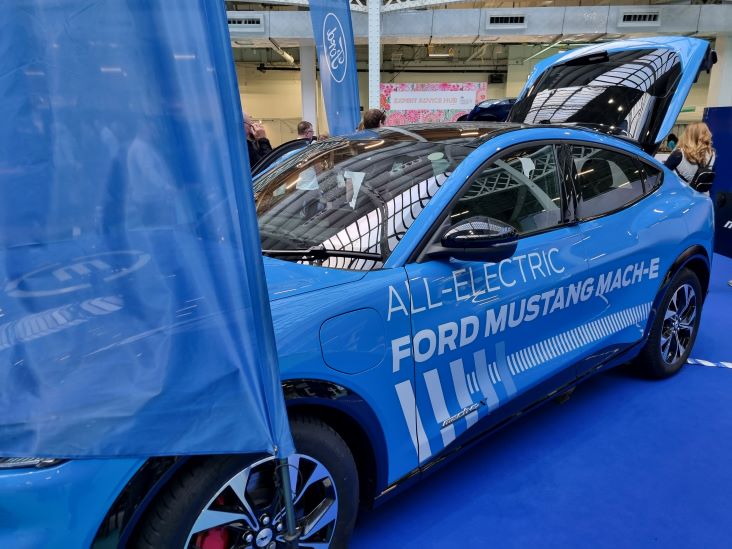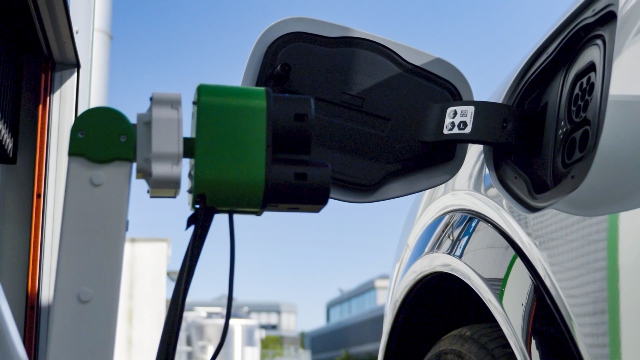
Ford’s next generation of electric vehicles
London, August 22, 2024, (Oilandgaspress) –– Ford Motor Company is taking additional actions to deliver a profitable, capital-efficient and growing electric vehicle business and add even more propulsion choices for customers that generate lower CO2 emissions.
The plan includes adjusting the company’s North America vehicle roadmap to offer a range of electrification options designed to speed customer adoption – including lower prices and longer ranges. In its fully electric portfolio, Ford will prioritize the introduction of a new digitally advanced commercial van in 2026, followed by two new advanced pickup trucks in 2027 and other future affordable vehicles. Ford also realigned its U.S. battery sourcing plan to reduce costs, maximize capacity utilization, and support current and future electric vehicle production.

“We are committed to innovating in America, creating jobs and delivering incredible new electric and hybrid vehicles that make a real difference in CO2 reduction,” said Ford President and CEO Jim Farley. “We learned a lot as the No. 2 U.S. electric vehicle brand about what customers want and value, and what it takes to match the best in the world with cost-efficient design, and we have built a plan that gives our customers maximum choice and plays to our strengths.”
The electric vehicle market is rapidly evolving as Chinese competitors leverage advantaged cost structures including vertical integration, low-cost engineering, multi-energy advanced battery technology and digital experiences to expand their global market share.
In addition, today’s electric vehicle consumers are more cost-conscious than early adopters, looking to electric vehicles as a practical way to save money on fuel and maintenance, as well as time by charging at home. This, coupled with scores of new electric vehicle choices hitting the market over the next 12 months and rising compliance requirements, has amplified pricing pressures. These dynamics underscore the necessity of a globally competitive cost structure while being selective about customer and product segments to ensure profitable growth and capital efficiency.

Smart capacity utilization and localization key to achieving cost reductions
Ford realigned battery sourcing to support both electric vehicle and other emerging electrified vehicle applications to unlock cost reductions, improve capital efficiency, and qualify for Inflation Reduction Act production and consumer tax credits.
“An affordable electric vehicle starts with an affordable battery,” Farley said. “If you are not competitive on battery cost, you are not competitive.”
Ford and LG Energy Solutions are targeting to move some Mustang Mach-E battery production from Poland to Holland, Michigan, in 2025 to qualify for Inflation Reduction Act benefits.
The BlueOval SK joint venture’s Kentucky 1 plant will manufacture cells for the current E-Transit with enhanced range and F-150 Lightning beginning mid-2025, delivering significant cost improvements coming online earlier than planned.
BlueOval SK at BlueOval City in Tennessee will produce cells starting in late 2025 for Ford’s new electric commercial van to be built at Ford’s Ohio Assembly Plant. Those same cells will be sourced to later power the next-generation electric truck to be assembled at BlueOval City and future emerging technology electrified vehicles. This common cell strategy gives Ford significant sourcing flexibility for manufacturing across multiple segments and electrified platforms as the market continues to evolve.
Lithium iron phosphate (LFP) battery production is on track to begin in 2026 at BlueOval Battery Park Michigan – America’s first automaker-backed LFP battery plant – qualifying for Inflation Reduction Act benefits and giving Ford one of the lowest-cost battery cells in North America.
Ford will provide an update on its electrification, technology, profitability and capital requirements in the first half of 2025.
Information Source: Read More
Oil and gas press covers, Energy Monitor, Climate, Renewable, Wind, Biomass, Sustainability, Oil Price, LPG, Solar, Marine, Aviation, Fuel, Hydrogen, Electric ,EV, Gas,

